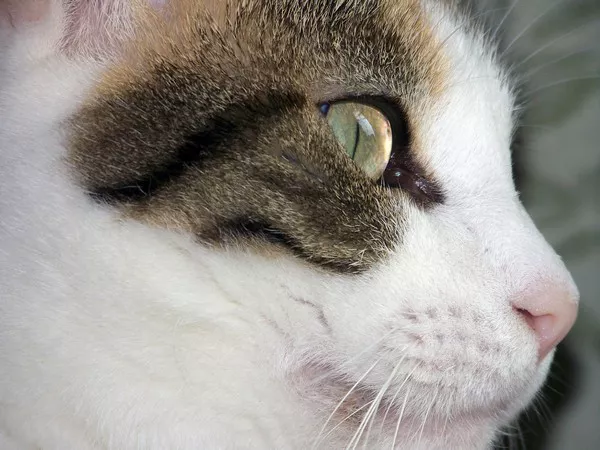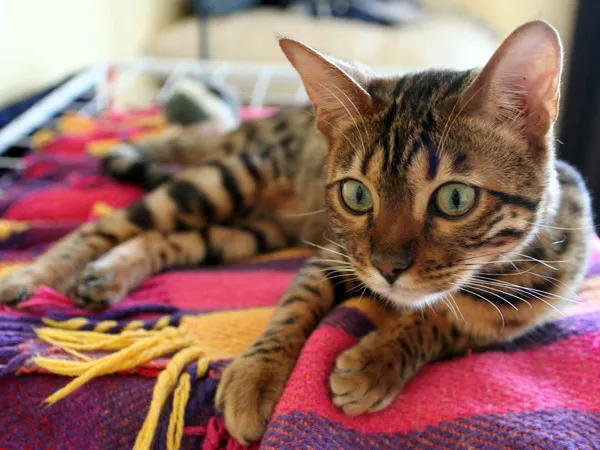Calico cats, with their striking tri-color coats and unique personalities, have long fascinated cat lovers around the world. However, there are often misconceptions surrounding the behavior of calico cats, particularly when it comes to scratching and biting. In this comprehensive guide, we’ll delve into the truth behind the behavior of calico cats, dispelling myths and providing insights into their scratching and biting tendencies.
Introduction to Calico Cats
Before delving into their behavior, let’s explore some key characteristics of calico cats:
1. Distinctive Appearance:
Calico cats are known for their distinctive tri-color coats, which typically consist of patches of white, black, and orange or cream fur. The unique combination of colors gives calico cats their eye-catching appearance and sets them apart from other cat breeds.
2. Varied Personalities:
Like all cats, calico cats have individual personalities and temperaments that can vary widely from one cat to another. Some calico cats may be outgoing and sociable, while others may be more reserved or independent, depending on their genetics, upbringing, and socialization experiences.
3. Genetic Quirks:
Calico cats are almost always female, as the tri-color coat pattern is linked to the X chromosome. Male calico cats are rare and typically have genetic abnormalities, such as XXY chromosomes, that result in their unique coat pattern.
Scratching Behavior in Calico Cats
Scratching is a natural behavior for cats that serves several purposes, including:
1. Territory Marking:
Scratching helps cats mark their territory by leaving visual and olfactory cues from scent glands located in their paw pads. By scratching objects in their environment, including furniture, walls, and scratching posts, calico cats communicate their presence and establish their territory.
2. Nail Maintenance:
Scratching also helps calico cats maintain healthy nails by removing the outer sheath or husk of the nail, which can become overgrown or damaged over time. Regular scratching helps cats keep their nails sharp and strong, enabling them to climb, hunt, and defend themselves effectively.
3. Stretching and Exercise:
Scratching provides calico cats with an opportunity to stretch their muscles and limbs, promoting flexibility and mobility. By engaging in scratching behavior, cats exercise their bodies and release pent-up energy, which can help prevent boredom and reduce stress.
Understanding Biting Behavior in Calico Cats
Biting is another natural behavior for cats that serves various purposes, including:
1. Communication:
Biting can be a form of communication for calico cats, signaling their emotions, intentions, or boundaries to other animals and humans. Cats may bite gently as a form of affection or play, or they may bite more forcefully to express discomfort, fear, or aggression.
2. Play Behavior:
Biting is a common component of play behavior in calico cats, particularly among kittens and young cats. Play biting is often gentle and may mimic hunting behaviors, such as stalking, pouncing, and wrestling, as cats engage in mock battles with their littermates or human companions.
3. Defensive Responses:
In some cases, calico cats may resort to biting as a defensive response to perceived threats or stressors in their environment. Cats may bite defensively when they feel cornered, frightened, or provoked, using their teeth and claws to protect themselves from perceived dangers.
Managing Scratching and Biting Behavior in Calico Cats
While scratching and biting are natural behaviors for calico cats, there are steps that owners can take to manage and redirect these behaviors effectively:
1. Provide Appropriate Outlets:
Provide your calico cat with appropriate scratching surfaces, such as scratching posts, pads, or trees, to satisfy their natural scratching instincts. Place scratching surfaces in areas where your cat spends time and encourage them to use them through positive reinforcement and rewards.
2. Redirect Play Behavior:
Redirect your calico cat’s play behavior towards appropriate toys and activities to minimize the risk of scratching and biting. Engage in interactive play sessions with toys that stimulate your cat’s hunting instincts, such as wand toys, feather teasers, or laser pointers, to provide an outlet for their energy and playfulness.
3. Establish Boundaries:
Set clear boundaries and rules for interaction with your calico cat to prevent unwanted scratching and biting. Use gentle but firm corrections to discourage biting or scratching behaviors, and provide positive reinforcement, such as treats or praise, when your cat behaves appropriately.
Conclusion: Navigating the Behavior of Calico Cats
In conclusion, calico cats are unique and fascinating creatures with their distinctive tri-color coats and individual personalities. While scratching and biting are natural behaviors for calico cats, understanding the reasons behind these behaviors can help owners better manage and redirect them effectively. By providing appropriate outlets for scratching, redirecting play behavior, and establishing clear boundaries, owners can foster a harmonious relationship with their calico cats and enjoy many happy years together. With patience, understanding, and positive reinforcement, owners can navigate the behavior of calico cats and create a loving and enriching environment for their feline companions.
FAQs:
1. Are female calico cats friendly?
The friendliness of female calico cats, like all cats, varies based on individual personality and experiences. Calico cats, known for their distinctive tri-color coat patterns, can exhibit a wide range of temperaments, from outgoing and affectionate to more reserved and independent. While some female calicos may be exceptionally friendly and sociable, others may be more aloof or shy. Early socialization, positive interactions, and a nurturing environment can help foster a strong bond and encourage friendliness in calico cats. Patience, understanding, and respect for their unique personalities are key to building a trusting relationship with these feline companions.
2. How do you calm a calico cat?
Calming a calico cat involves creating a peaceful and stress-free environment while addressing their specific needs and preferences. Start by providing a safe and comfortable space where your cat can retreat if feeling anxious or overwhelmed. Offer enrichment activities, such as interactive toys or puzzle feeders, to keep them mentally stimulated and engaged. Establishing a consistent routine for feeding, play, and rest can also help reduce anxiety and promote relaxation. Additionally, incorporating gentle grooming sessions and positive reinforcement techniques, such as treats or praise, can help soothe and reassure your calico cat during times of stress or agitation.











![Are Bengal Cats Legal?[Revealed!]](https://www.catsmeowweb.com/wp-content/uploads/2023/05/bengal-cat-39.webp)











